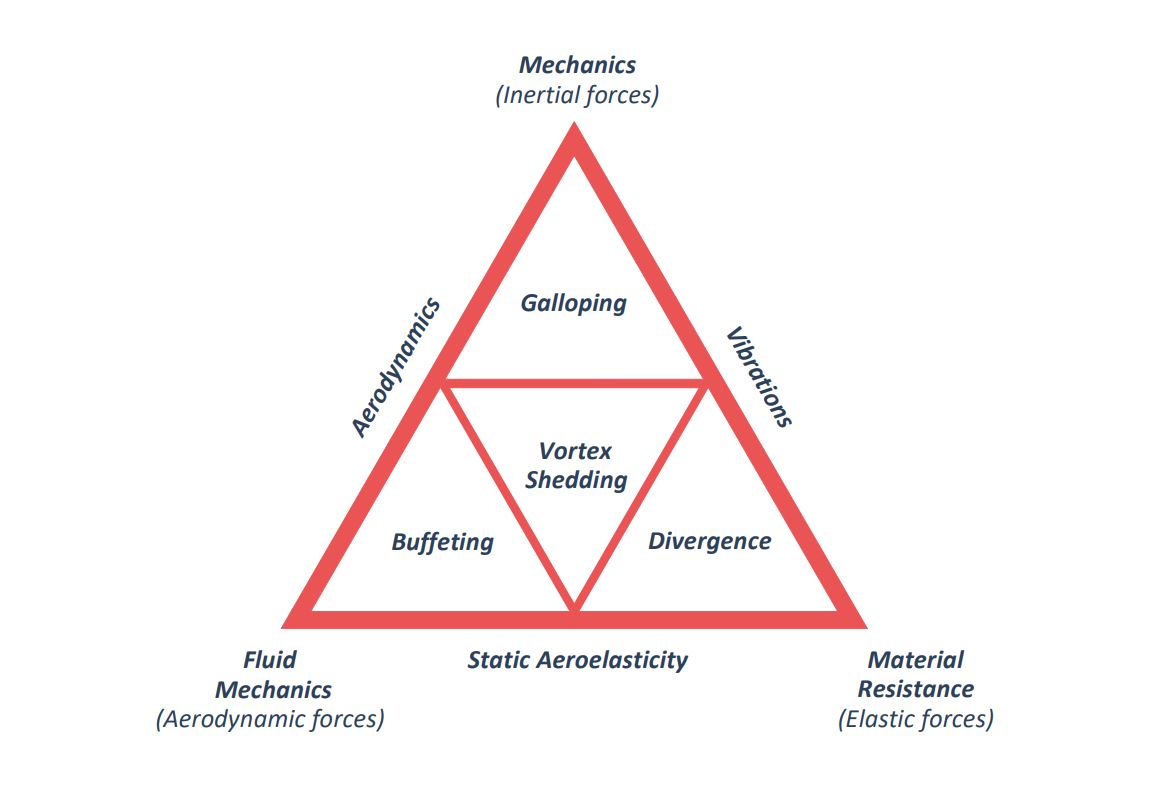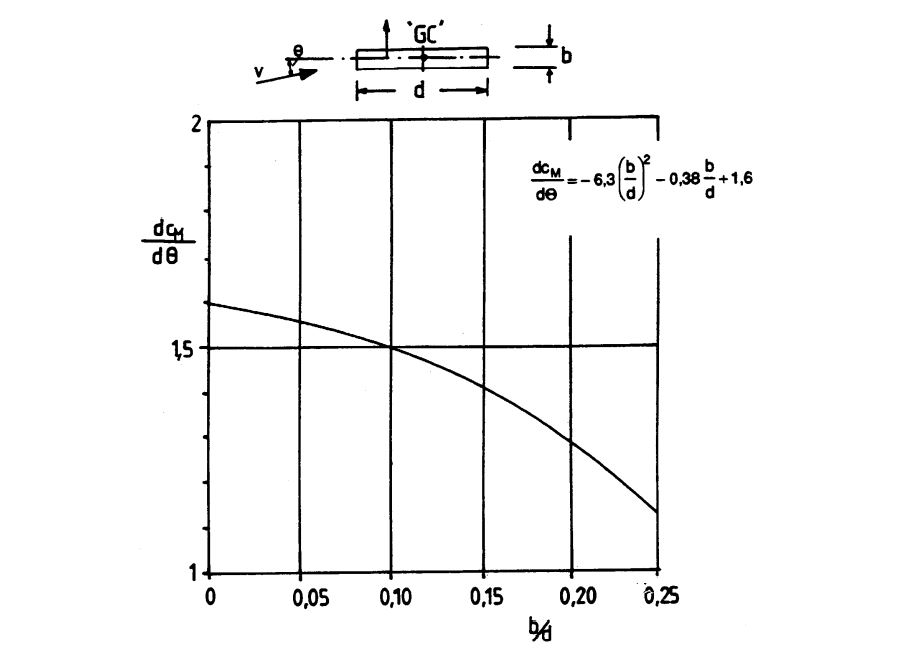
Can single-axis solar trackers reach the torsional divergence?
Torsional divergence is one of the 4 aeroelastic instability phenomena introduced in our post Solar Fluttering. In this section, we will focus on answering the question of whether this aeroelastic phenomenon is possible in single-axis solar trackers.

Divergence is an aeroelastic phenomenon that appears at high wind speeds. Like galloping, once it appears, a reduction in wind speed is needed to stabilize the structure. Whereas torsional galloping arises when aerodynamic forces nullify and make the system damping negative, torsional divergence arises when aerodynamic forces nullify and make the system stiffness negative. Therefore, under the same considerations of the galloping, we can establish a critical speed before the appearance of torsional divergence as:
U_{cr}|_{div} \geq \Large \sqrt {\frac {2k_{\theta}}{\rho b^2 \frac{ \partial c_m}{\partial \alpha}}}
The Eurocode approximates the coefficient \Large \frac{ \partial c_m}{\partial \alpha} for rectangular cross-section bridge decks according to the following formula and graph:

Under Eurocode considerations, it can be observed that the divergence appears later the lower the aspect ratio (b/d). This statement is also applicable to galloping. Therefore, slight tilts of trackers at stow position can improve this instability, with permission from static loads, and should therefore be validated in an aeroelastic wind tunnel.
In a photovoltaic plant, the critical speed at which torsional divergence appears must be higher than the survival speed of the plant. This survival speed is usually set around U_{sur, 3s, 10m} = 50m/s . So, we can establish a linear relationship between the stiffness (k) needed by the system and the change ratio of the aerodynamic coefficient \Large \frac{ \partial c_m}{\partial \alpha} to fulfill the survival speed of the plant.
U_{sur, 1h,10m} = \Large \frac{U_{sur, 3s,10m}}{1.52} \normalsize = \Large \frac{50}{1.52} \normalsize \geq \Large \sqrt {\frac {2k_{\theta}}{\rho b^2 \frac{ \partial c_m}{\partial \alpha}}}
Knowing the survival speed and assuming that the critical speed of divergence has to be higher than this, a linear relation can be established between the stiffness (k) required for a given value of \Large \frac{ \partial c_m}{\partial \alpha} . Since we do not know this parameter without an aeroelastic wind tunnel test, but knowing the values proposed by the Eurocode; for a standard tracker arm of 17.3m and 30 modules in two rows per arm with a section length of b = 4.7m, we can establish a graph of values with the following equation:
k_{\theta} = 14640 \Large \frac{ \partial c_m}{\partial \alpha}

Considering that the stiffness (k) can be calculated as:
k_{\theta} = I_{\theta} \omega_n^2 = I_{\theta} (2 \pi n)^2
It can be established whether the existing stiffness of the system is enough to eliminate the risk of the torsional divergence occurrence, if the value of the aerodynamic coefficients is previously known through an aeroelastic wind tunnel. In the event that the system is below the straight line, there is a risk of torsional divergence in the plant.
Certainly, values less than 1 of the coefficient \Large \frac{ \partial c_m}{\partial \alpha} would help to raise the critical speed of divergence occurrence significantly. Although Eurocode does not contemplate this option, the value of 1.6, which comes from bridge decks, may be a good approach. An aeroelastic wind tunnel could shed more light on this coefficient.
¿Galope o Divergencia?
Galloping and divergence are twin instabilities, while the former nullifies and makes negative the system damping, the latter does so with stiffness.
We therefore pose the following question:
Is it possible to recognize whether the vibrations observed in an aeroelastic wind tunnel at a certain wind speed are due to galloping or divergence?
The answer is yes.
If, for an instability observed at a given critical speed, which lasts in time when this speed is increased, the instability is maintained at the same speed when the system damping (ξ) is also raised, it is a matter of divergence. If, on the other hand, the damping increase causes a raise of the critical speed, it is a galloping issue.
This question cannot be verified by modifying the system stiffness (k), since the stiffness change directly influences the system natural frequency, modifying the critical speed for both galloping and torsional divergence on single-axis solar trackers.






